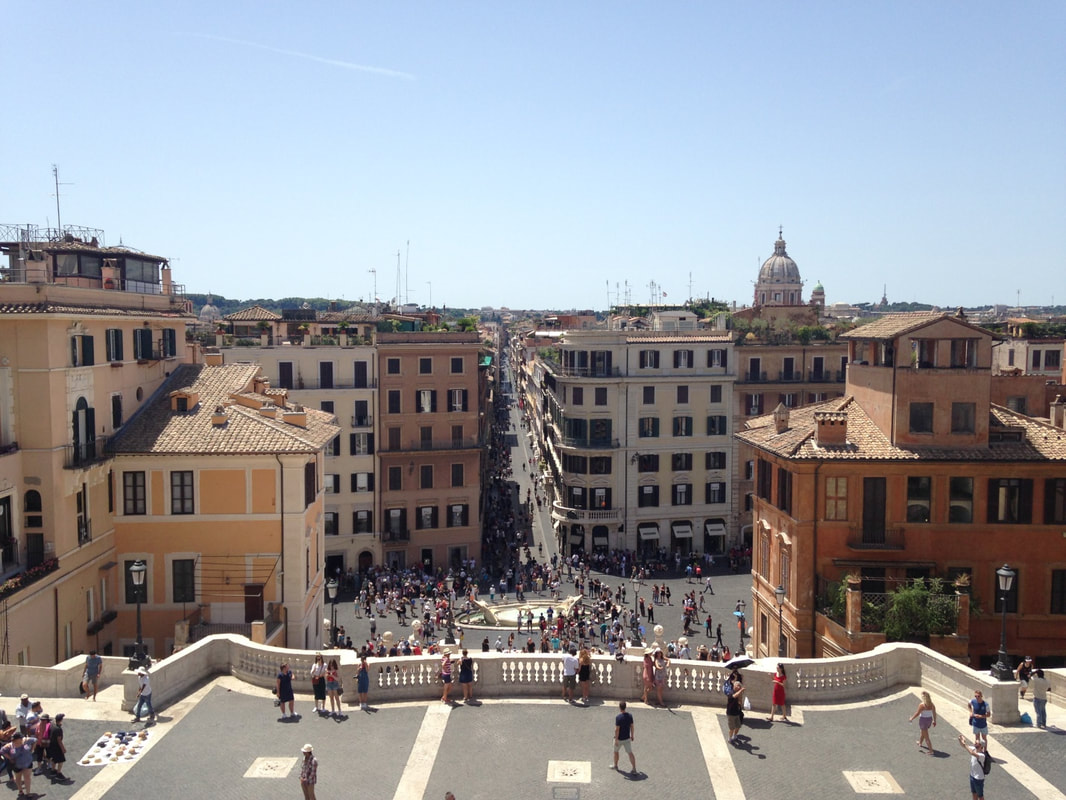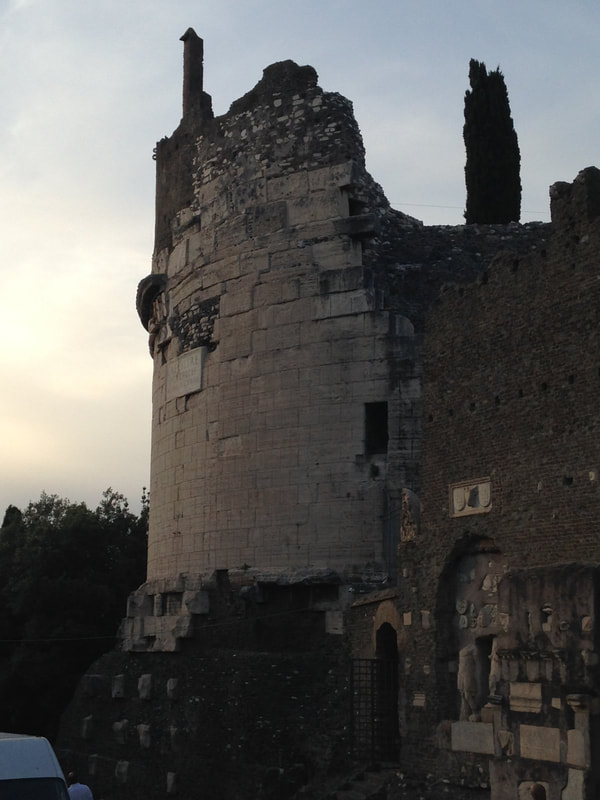Totila, King of the Goths during the last phase of the Byzantine-Ostrogothic War, is credited with pulling down much of the Aurelian Walls in 546 C.E. But leveling the walls of Rome was a massive project that could not be carried to completion. Totila’s reasoning was that Rome without walls would lose its military significance. To further Totila’s plan of rendering Rome irrelevant, the Gothic troops rounded up the last few hundred inhabitants of Rome and resettled them north of Naples. Rome was briefly a ghost town like Carsulae, with no one in it. But in fact Rome remained a vital road junction as the war continued, and armies and people trickled back, the city began to regrow, wall repairs followed and Rome remained a largely walled city into the 17th Century.
Around the corner we found the Colosseum, which has its own ticket complex, as well as another set of double lines for the Forum. The lines at the Colosseum were merely borderline terrible. Near Trajan’s Column we found some uncrowded ticket/security queues, but by then we’d decided that not being fenced in was worth more to us than tickets. We might not have been wild beasts to start with, but we would have turned into wild beasts by the time we got through the lines. It did not seem necessary to line up to stand at some particular spot.
Deep thoughts, these.
The immense Victor Emmanuel Monument, or Altare della Patria, erected between 1911 and 1925, however, didn’t seem excessive at all. Here was unabashed decorative enthusiasm on the correct Augustan scale.
Musing thus, we headed to the Pantheon. Stripped of its pagan gods, studded with post-ancient finery, and turned into a Catholic church it seemed to have a somewhat mutilated air, its gods stripped out, its niches empty or substituted with Baroque images of saints who had nothing to do with the purpose of the building.
http://www.atlasobscura.com/places/torre-argentina-roman-cat-sanctuary
After the imaginary race, we sat down across from a parked motor home decked out like a gypsy caravan. I had a plastic bottle of hot water, and I poured it over my head for the evaporation. Despoiled luggage was strewn through the bushes under the trees, alongside occasional bits of broken column. There were some pretty nice campsites for vagrants. We had wandered a street or two over from the Via Appia, in a neighborhood of gated and barred mansions and gardens where the owners probably came and went by limousine to avoid the broken needles.
The presumed vagrants seemed harmless enough and perhaps we were vagrants too in some larger sense. We propelled ourselves along the cobbles by main force, feet and legs numb. As in the morning, there was almost no traffic on the Appian Way. We were refreshed enough by the shade to detour across the park surrounding the Tomb of the Scipios, reaching the Via Latina to come out by a different gate, where we rewarded ourselves with gelato.
It was 10 P.M. We took turns minding the laundry. Alex minded the laundry first while I went out to get dinner. The young folks packing the Burger King plainly wondered why an American was wandering around on this side of the Tiber. I can only imagine what they thought when a second American turned up 15 minutes later.
This was my favorite part of the Rome trip, because it had real Romans in it. But we took no photos — I guess it was too real for the camera. Clinically, the last time my feet were as beat up as that was after a 30-mile stretch in West Virginia with a full backpack. These were nominally the same feet I started with, but they did not look it.
We had not seen the grave of Keats, in the old Protestant Cemetery next to the Pyramid of Cestius. We had erred sadly in not climbing the magnificent Altare della Patria. Another day, and we would have made it. But we were about to leave Rome for Elba, as the next post will discuss.


























 RSS Feed
RSS Feed